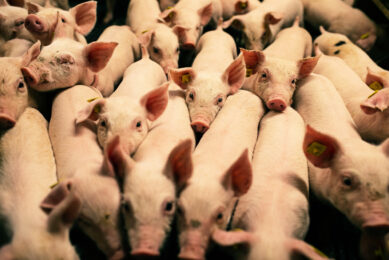Issues with Zinc Oxide
It is hardly necessary to reiterate the benefits of using zinc oxide in piglet diets: not only diarrhoea is contained, but also, growth performance is enhanced, and this is possible at a very reasonable cost, with a high degree of repeatability. Thus, zinc oxide (at high doses reaching up to 3000 ppm Zn) is a common ingredient in many piglet diets worldwide, or at least in those countries where it is (still) allowed. But, like many other things, zinc oxide does not come free of problems.
Here, we must note that zinc (from any source) causes toxicity when fed at levels exceeding 1000 ppm Zn for long periods of time (reaching into months depending on animal age and weight); this is an established fact. The fact zinc oxide in piglet diets is not ‘so toxic’ is because it is used only during the first few weeks post-weaning, when feed intake is almost invariably very low. Thus, toxicity is largely avoided in most cases.
©
But, there are many incidents in practice where producers have actually complained of depressed appetite (and growth) when high levels of zinc oxide are fed for prolonged periods of time. This has been the case when the high dosage of 3000 ppm Zn is kept up to four weeks (or longer) post-weaning. Or, as in some other minor cases, even when lower doses of Zn were employed, an early high feed intake of diets supplemented with
zinc oxide has caused toxicity resulting in a decline of feed intake in the later nursery period. And, finally, we have the interactions between zinc and phytase. Indeed, high levels of zinc reduce phytase efficacy, but also phytase enhances zinc solubility and absorption. Thus, it is possible zinc toxicity can be a problem in diets supplemented with high levels of zinc oxide and phytase (and fed for a long period of time).
©
What to do? The answer is quite simple. Go back to the original research and study how zinc oxide was used in those trials to find the best way to use it under most practical conditions. Indeed, such an exercise reveals that zinc oxide needs to be fed at 3000 ppm Zn only in the first week post-weaning, followed by 2000 ppm Zn in the next couple weeks, and then only at 1000 ppm Zn for the remaining nursery period. Of course, local regulations should be followed in case these contradict with the above dosages or timing.
©
Another route could be the use of copper sulfate in the later nursery period (where still allowed at high dosages), and the alternatives to zinc oxide, such as organic acids and essential oils, to name only but two. But, a word of caution is required here. When it comes to alternatives, not all such ingredients are equally effective as zinc oxide. Only through experience a specific blend of acids and essential oils can be identified and employed in each farm. At least, this has been my own experience!
©











